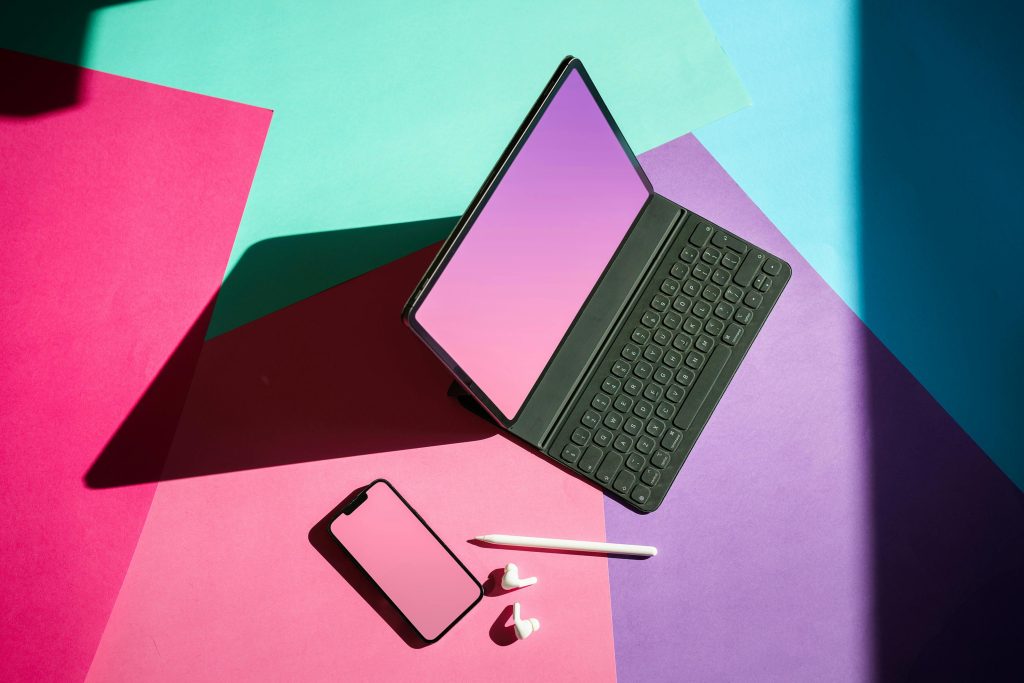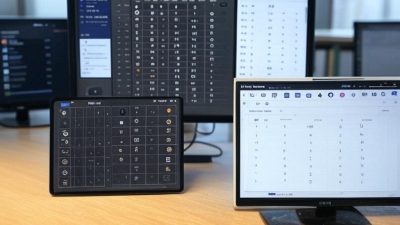Introduction: Your Brain Can Do So Much More
Hey there, fellow knowledge-seekers! Let me ask you something: ever spent hours cramming for a test, only to forget most of it by exam day? Or read the same page over and over because nothing’s sticking? Trust me, I’ve been there too, and it’s incredibly frustrating.
But here’s the good news: your memory isn’t fixed. It’s more like a muscle that can be trained and strengthened with the right memory enhancement techniques. That’s not just motivational talk—it’s backed by serious research.
In this post, I’m going to share seven scientifically-validated memory enhancement techniques that can dramatically improve how you learn and remember information. These aren’t just theoretical concepts—they’re practical memory enhancement techniques you can implement today to see real results in your academic performance.
Whether you’re in high school, college, or university, these memory enhancement techniques will help you study smarter, not harder. Ready to transform your learning experience? Let’s dive in!
Why Traditional Studying Often Fails Us
Before we get into the memory enhancement techniques that work, let’s talk about why so many common study methods don’t deliver results.
Many of us were never actually taught how to study effectively. We just picked up habits like highlighting text, re-reading notes, or marathoning through textbooks the night before an exam. Unfortunately, research shows these passive approaches are among the least effective ways to learn.
The problem is that these methods often create an “illusion of competence” – they make us feel like we’re learning when we’re actually not forming strong memories. They might help you recognize information when you see it again, but that’s different from being able to recall it when needed.
The memory enhancement techniques I’m about to share with you flip the script. They’re active rather than passive, challenging rather than comfortable, and—most importantly—they’re proven by cognitive science to significantly boost memory and learning.
1. Spaced Repetition: The Science of Perfect Timing ⏰
Imagine you’re building a brick wall. If you stack all the bricks at once without letting the mortar dry between layers, what happens? The wall collapses. Learning works the same way—your brain needs time to cement information.
Spaced repetition is one of the most powerful memory enhancement techniques based on the “forgetting curve” discovered by psychologist Hermann Ebbinghaus. This technique involves reviewing information at strategic intervals, just before you’re about to forget it. Each review strengthens the memory and extends the time before you need to review again.
How to implement spaced repetition:
- First review: 1 day after learning the material
- Second review: 3 days after the first review
- Third review: 7 days after the second review
- Fourth review: 2 weeks after the third review
- Fifth review: 1 month after the fourth review
This memory enhancement technique might seem like more work upfront, but you’ll actually spend less total time studying and remember far more in the long run. It’s the difference between watering a plant regularly versus dumping a bucket of water on it once and hoping for the best.
Pro tip: This works incredibly well when combined with active recall (our next memory enhancement technique). When you space out your practice tests, you’re essentially getting the benefits of two powerful memory enhancement techniques at once!
2. Active Recall: Test Yourself Before the Test 📝
Pop quiz: what’s the most effective memory enhancement technique for studying? A) Re-reading your notes B) Highlighting important passages C) Testing yourself on the material
If you guessed C, you’re right! Active recall is a key memory enhancement technique that means testing yourself instead of passively reviewing information. It feels harder than simply re-reading your notes, but that difficulty is exactly what makes it work so well.
When you force your brain to retrieve information without looking at your notes, you strengthen the neural pathways associated with that knowledge. It’s like a mental workout—the more you exercise those pathways, the stronger they become.
Ways to practice active recall:
- Turn your notes into questions, then practice answering them
- Use flashcards with questions on one side and answers on the other
- Close your book and try to write down everything you remember about a topic
- Explain concepts out loud as if you’re teaching someone else (without looking at your notes)
- Draw diagrams or processes from memory on blank paper
Research consistently shows that students who practice this memory enhancement technique perform significantly better on exams than those using passive methods. Plus, the information sticks around longer, which means less re-learning for cumulative exams or prerequisites for future courses.
Remember, it’s supposed to feel challenging at first. If you can easily recall everything on your first try, you’re probably not learning optimally. The struggle is where growth happens!
3. Memory Palace: Your Mental Storage Mansion 🏰
Did you know that your spatial memory—the kind you use to remember where things are located—is incredibly powerful? The memory palace technique (also called the method of loci) is an advanced memory enhancement technique that harnesses this ability to help you remember abstract information.
This memory enhancement technique has been used since ancient times and was the secret weapon of memory champions. A 2017 study showed that memory palace training produced “potent and enduring effects on memory capacity” with significant improvements compared to control groups.
Here’s how this memory enhancement technique works:
- Choose a familiar place you know well (your home, school, or a route you frequently walk)
- Identify specific locations within that place (furniture, rooms, landmarks)
- Associate each piece of information you need to remember with one of these locations
- Create vivid, unusual mental images that link the information to each location
- To recall the information, mentally walk through your chosen place
For example, if you’re learning about the planets in order from the sun, you might place Mercury (which could be visualized as a thermometer because it’s hot) on your front doorstep, Venus (visualized as a beautiful woman) in your entryway, Earth in your living room, and so on.
This memory enhancement technique works because our brains evolved to remember spatial information extremely well. By converting abstract information into vivid spatial memories, you’re essentially hacking your brain’s natural abilities.
Real-life application: I used this memory enhancement technique to memorize all 50 U.S. states and their capitals for a geography test. By placing each state (visualized in a unique way) throughout my childhood home, I was able to recall them perfectly on test day and still remember most of them years later!
4. Chunking: Breaking Down the Mental Load 🧩
Our working memory has limits—most people can only hold about 4-7 items in their mind at once. But what counts as an “item” can be expanded through a memory enhancement technique called chunking.
Chunking involves organizing information into meaningful groups. Think about how you remember phone numbers: not as ten separate digits, but as chunks (area code, prefix, line number).
How to implement chunking:
- Group related concepts, ideas, or formulas together
- Create conceptual maps showing relationships between ideas
- Develop hierarchical organization systems for complex subjects
- Break down complex information into smaller, manageable pieces
For example, if you’re studying chemistry and need to memorize the periodic table, don’t try to learn all 118 elements at once. Instead, use this memory enhancement technique to chunk them by group (alkali metals, noble gases, etc.) or by properties they share.
Chunking as a memory enhancement technique reduces cognitive load and allows you to remember more information by packaging it efficiently. It’s like the difference between carrying 20 loose oranges versus putting them in bags of 5—suddenly the task becomes much more manageable.
5. Digital Tools: Technology to Boost Your Brain 📱
In today’s digital world, we have amazing tools to help implement these memory enhancement techniques. Here are some free resources that can dramatically improve your learning:
Spaced Repetition Software:
Anki is a free, open-source flashcard program that automatically schedules your reviews based on how well you know each card. It’s like having a personal assistant that knows exactly when you need to review something to maximize retention with proven memory enhancement techniques.
I can personally attest to Anki’s effectiveness as a memory enhancement technique tool—I used it throughout my science courses and was amazed at how much information I retained long-term. Create your own flashcards or download pre-made decks for almost any subject!
Brain Training Apps:
- Lumosity offers free basic cognitive training exercises
- Elevate provides daily brain training games
- Memrise combines spaced repetition memory enhancement techniques with mnemonic techniques
These apps can complement your formal studying by enhancing working memory capacity and cognitive regulation abilities—both factors significantly linked to academic achievement according to research published in the Educational Research Journal.
Memory Challenge Platforms:
Memory League lets you compete with others in memory challenges, making practice more fun and engaging. The competitive element provides motivation while training core memory skills with proven memory enhancement techniques.
These tools take the administrative burden out of implementing evidence-based memory enhancement techniques. They’re like having a personal trainer for your brain—they tell you what to do and when to do it for optimal results.

6. Mind-Body Connection: Physical Factors That Boost Memory 💤
Your physical state has a massive impact on your cognitive abilities. Let’s look at two critical factors that work alongside memory enhancement techniques:
Sleep: Your Brain’s Memory Consolidation Time
During sleep, particularly during deep sleep and REM cycles, your brain transfers information from short-term to long-term memory—a process called consolidation. It’s like your brain is filing away the day’s learning for future retrieval.
Studies consistently show that sleep deprivation significantly impairs memory formation and recall. That all-nighter before the exam? It’s probably doing more harm than good, even with the best memory enhancement techniques.
Sleep strategies for better learning:
- Aim for 7-9 hours of sleep nightly (yes, really!)
- Review important material shortly before sleeping to enhance consolidation
- Consider a 20-minute power nap after intense study sessions
- Prioritize sleep the night before exams rather than last-minute cramming
My experience: When I started prioritizing sleep as part of my memory enhancement techniques during exam periods, my grades actually improved even though I was technically studying fewer hours. Quality trumps quantity when it comes to both sleep and study time.
Exercise: Get Moving to Remember More 🏃♀️
Think exercise is just for your body? Think again! Multiple studies show a strong correlation between physical activity and improved cognitive function, including memory. This makes exercise one of the most underrated memory enhancement techniques.
Exercise increases blood flow to the brain, stimulates the production of growth factors, and promotes the formation of new neurons, particularly in the hippocampus—a brain region critical for memory formation.
Ways to incorporate movement into your memory enhancement techniques:
- Take a 30-minute walk or jog before tackling challenging material
- Use movement breaks between study sessions (5-10 minutes every hour)
- Try studying while walking for material that doesn’t require writing
- Schedule workouts on study days, not just “when you have time”
The evidence is clear: physical activity is not a break from learning—it’s an essential component of effective memory enhancement techniques.
7. Advanced Study Strategies: Level Up Your Learning 🎯
Ready to take your memory enhancement techniques to the next level? Here are some advanced approaches that combine multiple cognitive principles:
Dual Coding: Double Your Memory Strength
Dual coding is a memory enhancement technique that involves combining visual and verbal information to create multiple mental representations of the same content. Research shows that presenting information in both formats enhances learning by creating multiple pathways to the same information.
Implementation strategies for this memory enhancement technique:
- Convert text notes into diagrams, charts, or mind maps
- Add verbal explanations to visual information
- Create your own illustrations for concepts (artistic ability doesn’t matter!)
- Use visualization techniques when memorizing verbal information
Interleaving: Mix It Up for Stronger Connections
Rather than studying one topic intensively before moving to the next (blocked practice), interleaving is a memory enhancement technique that involves alternating between different topics or problem types.
For example, instead of doing 20 algebra problems, then 20 geometry problems, you might mix them together. This memory enhancement technique improves long-term retention and the ability to apply knowledge in new contexts.
How to implement interleaving as a memory enhancement technique:
- Mix different problem types when practicing math or science
- Study related but different topics in a single session
- Alternate subjects rather than marathon studying one subject
- Review previous material alongside new learning
This memory enhancement technique initially feels more difficult—you might make more mistakes at first—but this productive struggle leads to stronger learning in the long run.
Elaboration: Make It Meaningful
Elaboration is a memory enhancement technique that involves connecting new information to what you already know by asking how and why questions. This deeper processing creates multiple retrieval cues for the same information.
Elaboration strategies as memory enhancement techniques:
- Ask yourself how new concepts relate to previously learned material
- Generate examples that connect abstract ideas to concrete situations
- Write explanations of why processes work as they do
- Create analogies between new information and familiar concepts
When you elaborate on information using this memory enhancement technique, you’re not just memorizing facts—you’re building a web of connections that makes recall easier and learning more meaningful.
Putting It All Together: Your Custom Memory Enhancement Techniques System 🧩
The most effective approach isn’t using just one memory enhancement technique—it’s combining multiple compatible strategies into a personalized system. Here’s a sample weekly study plan that integrates several of the memory enhancement techniques we’ve discussed:
Sample Weekly Study Plan with Memory Enhancement Techniques:
Sunday:
- Create flashcards for new material (active recall memory enhancement technique)
- Set up spaced repetition schedule in Anki
- Organize information into logical chunks (chunking memory enhancement technique)
- 30-minute exercise session
Monday:
- Review Day 1 material using active recall memory enhancement techniques
- Create visual representations of key concepts (dual coding memory enhancement technique)
- 20-minute memory palace practice
- 5-minute brain training game
Tuesday:
- Interleave practice between current and previous topics (interleaving memory enhancement technique)
- First spaced repetition review of Sunday’s material
- Elaborate on concepts by connecting to real-world examples (elaboration memory enhancement technique)
- 30-minute exercise session
Wednesday:
- Active recall practice with different question formats
- Create memory palace locations for difficult concepts
- Test yourself on visual representations without looking
- Short nap after studying (sleep memory enhancement technique)
Thursday:
- Second spaced repetition review of Sunday’s material
- First review of Tuesday’s material
- Mixed practice session (interleaving memory enhancement technique)
- 30-minute exercise session
Friday:
- Teach concepts to someone else or explain aloud
- Review memory palace journey
- Identify areas needing more work (metacognition)
- Plan specific review sessions for weekend
Saturday:
- Comprehensive mixed review using active recall memory enhancement techniques
- Further elaborate on challenging concepts
- Third review of Sunday’s material
- 30-minute exercise session
This plan incorporates multiple memory enhancement techniques: spaced repetition, active recall, chunking, dual coding, interleaving, and physical exercise—all working together to maximize your learning efficiency.
Remember, the goal isn’t to use every memory enhancement technique for every topic. Start with one or two memory enhancement techniques that seem most applicable to your learning style and subject matter, then gradually incorporate others as you get comfortable.
Conclusion: Your New Learning Superpower 🌟
We’ve covered a lot of ground in this post, from basic memory principles to advanced learning strategies. The research is clear: memory isn’t a fixed capacity but a skill that can be substantially improved through systematic memory enhancement techniques.
By implementing these seven research-validated memory enhancement techniques, you’re not just preparing better for your next exam—you’re building learning abilities that will serve you throughout your educational journey and beyond.
The beauty of these memory enhancement techniques is that they work for virtually any subject. Whether you’re studying biology, history, mathematics, or languages, these memory enhancement techniques adapt to different types of content and learning objectives.
Start small—pick one memory enhancement technique that resonated with you and implement it in your studies this week. Notice the difference in how well you retain information and how confident you feel in your knowledge.
Remember, effective learning isn’t about how many hours you put in—it’s about how you use those hours. With these memory enhancement techniques, you’ll be studying smarter, not harder. 🧠✨
What memory enhancement technique are you most excited to try? Have you had success with any of these memory enhancement techniques already? Share your experiences in the comments below!
And if you found this post helpful, check out our related article on best tools for writing essays and long form content to further boost your academic performance.



